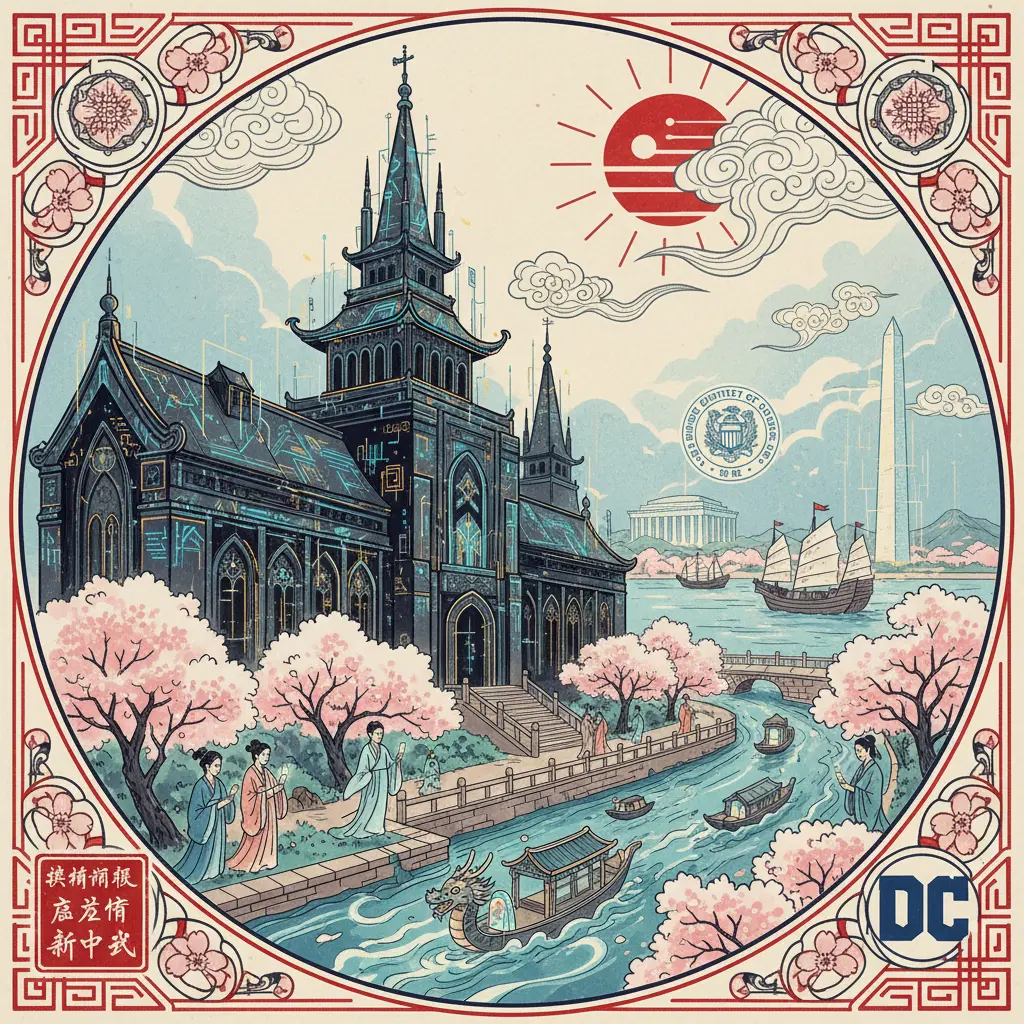
Professional illustration about Georgetown
DC Area Guide
DC Area Guide
Washington, D.C., the capital city of the United States, is a vibrant hub of cultural institutions, historic landmarks, and federal government activity. Whether you're a first-time visitor or a longtime resident, the District of Columbia offers endless opportunities to explore its rich cultural heritage and iconic attractions.
Start your journey at the National Mall, the heart of D.C.'s tourism scene. Stretching from the Lincoln Memorial to the U.S. Capitol, this sprawling green space is lined with monuments and memorials honoring figures like George Washington and Abraham Lincoln. Don’t miss the National Gallery of Art, home to masterpieces spanning centuries, or the Smithsonian Institution's world-class museums—all free to the public.
For a taste of D.C.'s historic preservation and urban planning, head to Georgetown, one of the city’s oldest neighborhoods. Designed by Pierre Charles L'Enfant and surveyed by Benjamin Banneker, this area blends cobblestone streets with upscale dining and shopping. The Potomac River waterfront offers scenic walks, while The Wharf provides a modern contrast with its bustling marina and entertainment venues.
Public transportation is a breeze thanks to D.C.'s efficient metro system, making it easy to hop between attractions like the White House, Library of Congress, and lesser-known gems. Whether you're drawn to museums, historic landmarks, or the dynamic energy of the federal government, Washington, D.C., delivers an unforgettable experience.
Pro tip: Visit during off-peak hours to avoid crowds, and consider exploring neighborhoods beyond the National Mall to discover the city’s diverse cultural heritage and local charm.

Professional illustration about National
Top DC Attractions
Washington, D.C. is packed with iconic attractions that showcase the capital city's rich history, cultural heritage, and stunning urban planning. At the heart of it all is the National Mall, a sprawling green space flanked by monuments and museums that tell the story of America. Here, you’ll find the Lincoln Memorial, a towering tribute to the 16th president, and the U.S. Capitol, where the federal government shapes the nation’s future. Nearby, the White House stands as a symbol of presidential power, while the Smithsonian Institution—the world’s largest museum complex—offers free admission to treasures like the National Gallery of Art, home to masterpieces from Van Gogh to Da Vinci.
For a change of pace, head to Georgetown, one of D.C.’s most charming neighborhoods. Stroll along the cobblestone streets, shop at boutique stores, or grab a coffee by the Potomac River. The area’s historic roots trace back to George Washington and Pierre Charles L'Enfant, whose vision for the city was brought to life with help from surveyor Benjamin Banneker. Don’t miss The Wharf, a revitalized waterfront district buzzing with restaurants, live music, and scenic boat rides. It’s a perfect spot to unwind after exploring the Library of Congress, the world’s largest library, where you can marvel at its breathtaking architecture and rare collections.
D.C.’s public transportation, including its efficient metro system, makes it easy to hop between these historic landmarks. Whether you’re drawn to cultural institutions like the Smithsonian or the quiet beauty of the Lincoln Memorial at sunset, the District of Columbia offers something for every traveler. The city’s commitment to historic preservation ensures that these attractions remain as captivating in 2025 as they were when first designed. From the grandeur of the U.S. Capitol to the lively energy of The Wharf, D.C.’s top spots are a testament to its role as a center of tourism and federal government.
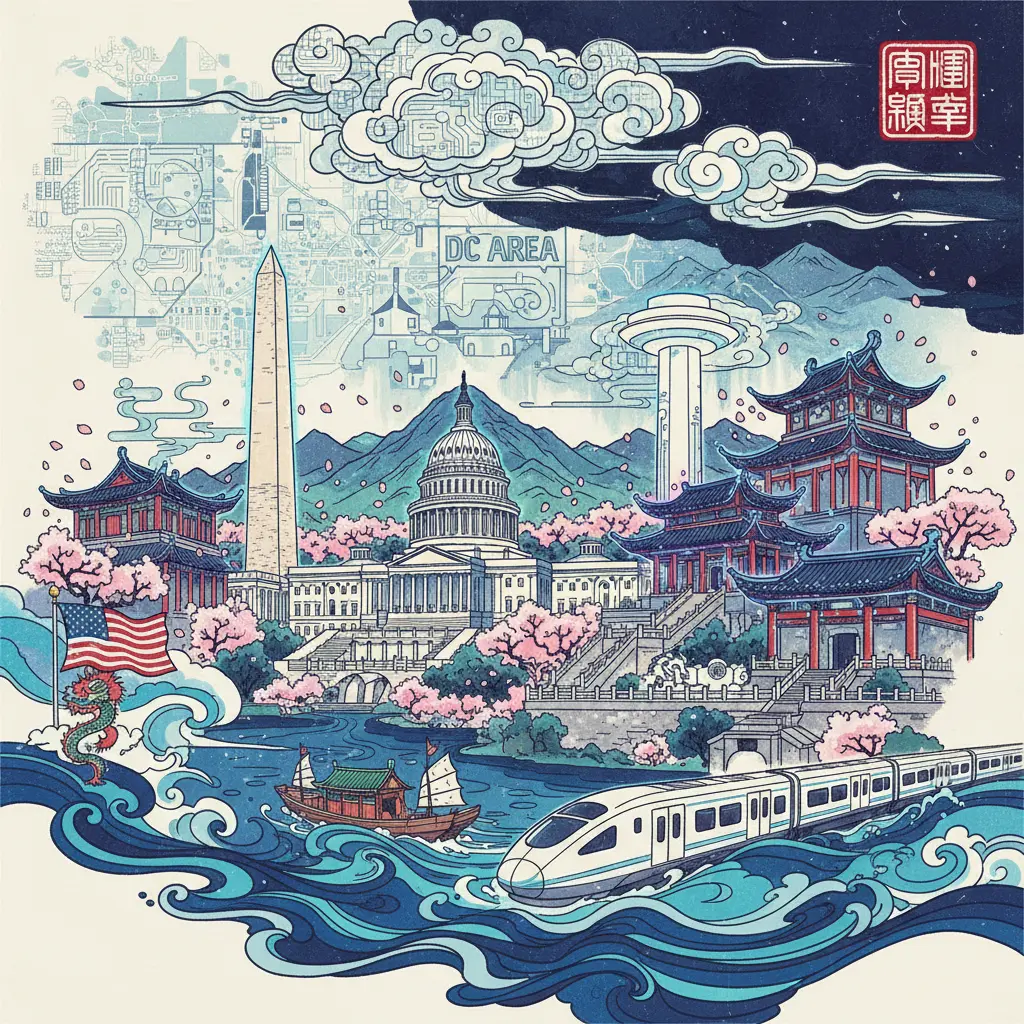
Professional illustration about Washington
DC Dining Spots
DC Dining Spots: Where History Meets Flavor
Washington, D.C. isn’t just about politics and monuments—it’s a food lover’s paradise where every meal comes with a side of history. Whether you’re strolling near the National Mall or exploring Georgetown, the city’s dining scene blends cultural heritage with modern culinary innovation. Start your day with a coffee and pastry at a café near the Library of Congress, where the aroma of freshly brewed beans mingles with the scent of old books. For lunch, head to The Wharf, a revitalized waterfront district along the Potomac River, where seafood shacks serve up Chesapeake Bay crabs alongside skyline views.
The Smithsonian Institution isn’t just for museums; its surrounding blocks hide gems like family-run eateries dishing out half-smokes (a D.C. sausage staple) and upscale bistros inspired by Pierre Charles L’Enfant’s urban planning. Near the U.S. Capitol, you’ll find power-lunch spots where lobbyists and lawmakers debate over steak frites, while Benjamin Banneker’s legacy lives on in Afro-Caribbean fusion restaurants celebrating the city’s Black culinary roots. Craving international flavors? Dupont Circle offers everything from Ethiopian injera to Vietnamese pho, reflecting D.C.’s status as a capital city of global tastes.
Even dining here is a lesson in historic preservation. The Lincoln Memorial area might seem like a tourist trap, but hidden gems like farm-to-table cafes source ingredients from George Washington’s Mount Vernon estate. For a romantic evening, book a table near the National Gallery of Art, where wine bars pair local Virginia vintages with small plates. Pro tip: Use the metro system to hop between neighborhoods—urban planning at its finest—because no one should miss Georgetown’s waterfront dining or the White House-adjacent restaurants where secret service agents might be your fellow diners.
Bonus: Don’t leave without trying a "mumbo sauce"-glazed wing, a D.C. original, or a cupcake from the bakery that put cultural institutions on the dessert map. Whether you’re here for the monuments or the meals, every bite tells a story.
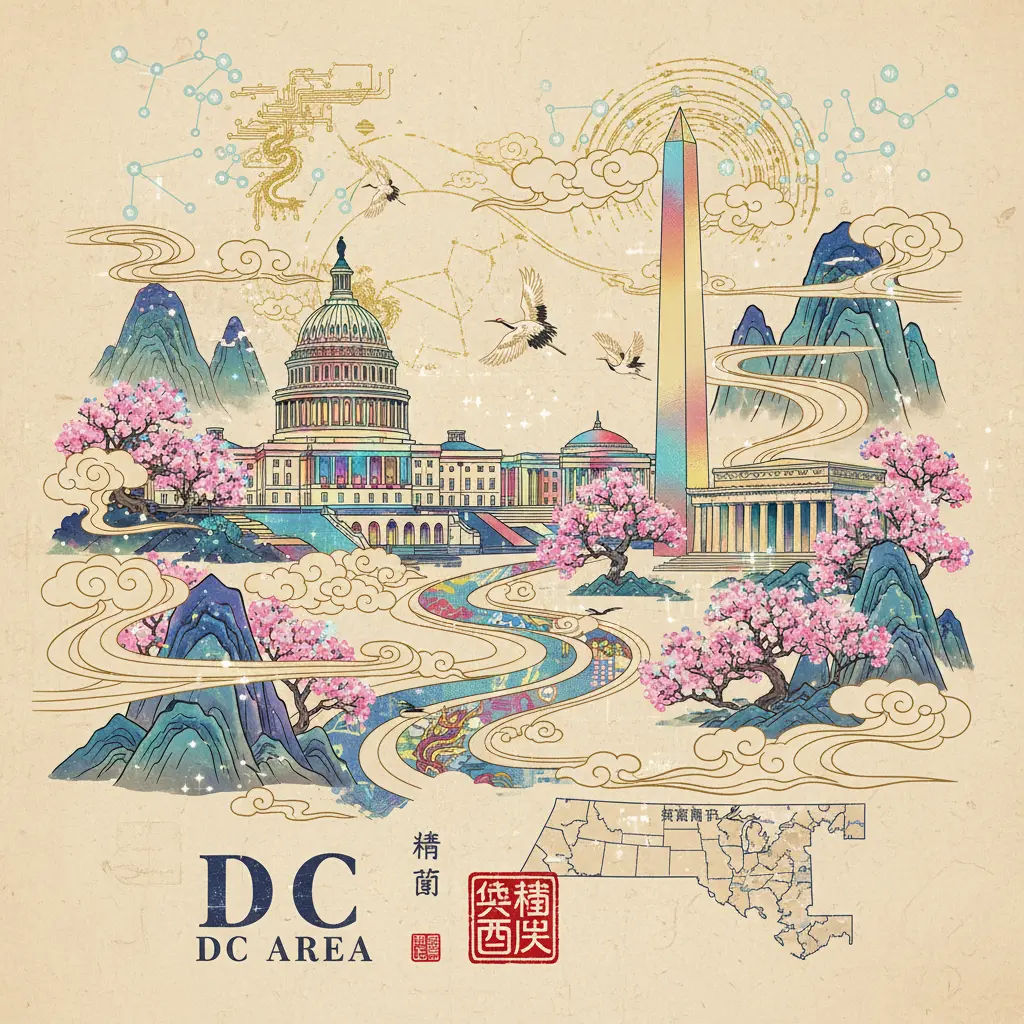
Professional illustration about District
DC Transportation Tips
Here’s a detailed, conversational-style paragraph optimized for SEO with your specified requirements:
Getting around Washington, D.C. is easier than you think – if you know the insider tricks. The Metro system (officially WMATA) is your best friend for hitting major spots like the National Mall, U.S. Capitol, and Smithsonian Institution museums. Pro tip: Avoid rush hour (7-9:30am and 4-6:30pm) when federal government workers flood the trains. For Georgetown, note that there’s no direct Metro stop; take the Circulator bus ($1) from Dupont Circle or Foggy Bottom stations instead. The Potomac River adds scenic routes – try the water taxi between The Wharf and Old Town Alexandria for killer views of the Lincoln Memorial.
Walkability is D.C.’s secret weapon. Pierre Charles L’Enfant’s 18th-century urban planning created wide avenues perfect for strolling between landmarks. From the White House to the Library of Congress, most attractions are within a 30-minute walk – just wear comfy shoes. Bike-sharing (Capital Bikeshare has 4,000+ cycles) works great for the National Gallery of Art to Lincoln Memorial stretch.
Parking? Don’t bother. Between $30/day garage fees and Benjamin Banneker’s famously confusing street layout (thanks to those diagonal avenues!), you’ll waste time circling blocks near historic landmarks like the Smithsonian Castle. Ride-hailing apps are clutch for nighttime trips to neighborhoods like The Wharf, where the last Metro departs around midnight.
Cultural heritage buffs should time their transit right: The DC Streetcar (free!) runs every 15 minutes along H Street’s historic corridor, while weekend metro track work often reroutes trains – check @wmata on Twitter for real-time updates. Want to follow in George Washington’s footsteps? The privately operated Tourmobile buses (now called Old Town Trolley) still offer hop-on access to 25+ monuments and memorials.
Accessibility note: All Metro stations and buses comply with ADA standards, with priority seating and audio announcements – a lifesaver when visiting the National Gallery of Art’s sprawling galleries. For urban planning nerds, the Metro’s Brutalist architecture (especially the vaulted ceilings at L’Enfant Plaza station) is itself an attraction.
Money-saving hack: Get a SmarTrip card ($2) for unlimited transfers between buses and trains – way cheaper than single-ride tickets. Most cultural institutions are clustered in walkable zones, so plan your route clockwise from the U.S. Capitol westward to avoid backtracking.
Local secret: The DC Circulator’s National Mall route ($1) stops at all major museums and memorials, running every 10 minutes – far more efficient than waiting for crowded tour buses. If you must drive, use SpotHero to reserve parking near historic preservation districts like Georgetown in advance.
Pro move: Download the Transit app for live updates on every bus/train in the District of Columbia – it even shows how crowded your next Metro car will be. For tourism efficiency, group destinations by Metro line: Red Line for Dupont Circle’s embassies, Blue/Orange/Silver for the National Mall core.
Final reality check: D.C.’s public transportation isn’t perfect (looking at you, single-tracking delays), but with these strategies, you’ll spend less time commuting and more time marveling at the Library of Congress’ mosaics or the Lincoln Memorial’s moonlit steps.
Bonus: Late-night? The 90s-series Metro cars still in service have cushioned seats – a small mercy after 20,000 steps exploring the capital city’s treasures.

Professional illustration about Congress
DC Neighborhoods
DC Neighborhoods
Washington, D.C. is a city of contrasts, where historic charm meets modern vibrancy, and each neighborhood tells a unique story. From the cobblestone streets of Georgetown to the political buzz around the U.S. Capitol, the District of Columbia offers a mosaic of experiences for residents and visitors alike. Whether you're drawn to cultural institutions like the Smithsonian Institution or the waterfront energy of The Wharf, D.C.'s neighborhoods are as diverse as the people who call the capital city home.
Georgetown stands out as one of the most iconic historic landmarks, blending 18th-century architecture with upscale shopping and dining. Stroll along the Potomac River or explore the C&O Canal, a remnant of the city’s early urban planning by Pierre Charles L'Enfant and Benjamin Banneker. Meanwhile, the National Mall remains the heart of D.C.'s tourism, flanked by the Lincoln Memorial, National Gallery of Art, and other monuments that pay homage to figures like George Washington. The Mall isn’t just a collection of memorials—it’s a living space for festivals, protests, and daily joggers, reflecting the pulse of the federal government just blocks away.
For those who prefer a mix of history and contemporary flair, The Wharf has emerged as a hotspot. This revitalized waterfront district boasts trendy restaurants, live music venues, and scenic views of the Potomac River. It’s a prime example of D.C.’s commitment to historic preservation while embracing modern development. Nearby, the Library of Congress and U.S. Capitol anchor the Capitol Hill neighborhood, where row houses and local cafes sit in the shadow of power.
D.C.’s public transportation, including its metro system, makes it easy to hop between neighborhoods. The city’s layout, originally designed by L’Enfant, ensures that cultural heritage sites are accessible, whether you’re visiting the White House or exploring lesser-known gems like the Smithsonian’s Anacostia Community Museum. Each neighborhood contributes to the city’s identity, from the bustling corridors of Downtown to the quiet, tree-lined streets of Dupont Circle.
When planning your visit—or if you’re considering a move—prioritize neighborhoods that align with your interests. Love museums and attractions? Stay near the National Mall. Prefer a lively, social scene? The Wharf or Adams Morgan might be your pick. And if you’re a history buff, Georgetown and Capitol Hill offer endless layers of stories to uncover. D.C.’s neighborhoods aren’t just places on a map; they’re the soul of the city, each with its own rhythm and character.
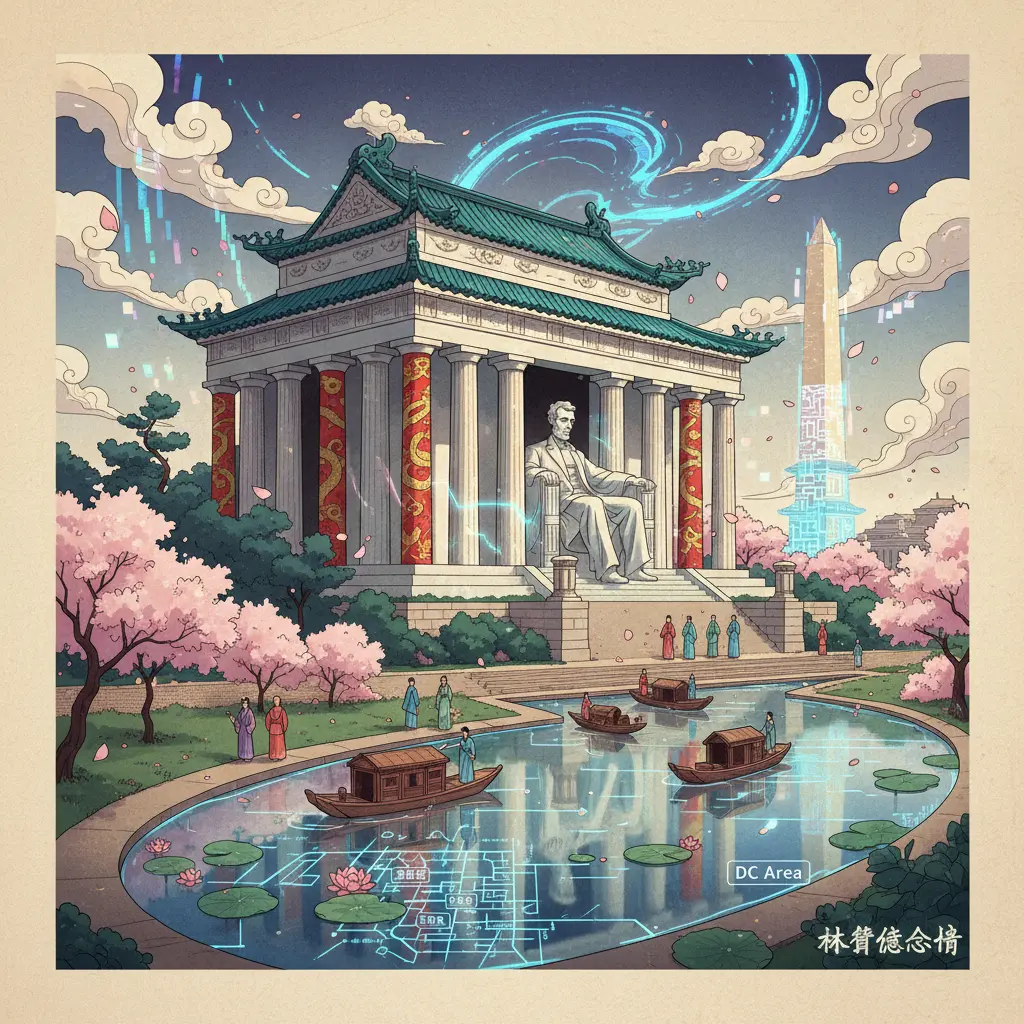
Professional illustration about Memorial
DC Nightlife Guide
DC Nightlife Guide: Where History Meets Modern Vibes
Washington, D.C. transforms after dark, offering a nightlife scene as diverse as its daytime attractions. While the National Mall and Lincoln Memorial quiet down, neighborhoods like Georgetown and The Wharf come alive with rooftop bars, live music, and waterfront dining. Start your evening with a cocktail at a speakeasy-style lounge near the White House, where the ambiance blends political intrigue with mixology artistry. For a more laid-back vibe, head to the Potomac River waterfront, where bars like The Brighton offer stunning views of the Kennedy Center’s illuminated facade.
Music lovers shouldn’t miss the 9:30 Club, a legendary venue that’s hosted everyone from punk bands to jazz ensembles. Meanwhile, U Street Corridor—once the heart of D.C.’s jazz scene—still pulses with live performances at spots like Bohemian Caverns, paying homage to the city’s cultural heritage. If you prefer dancing, Echostage draws top DJs to its massive warehouse-style space, while Smithsonian Institution-adjacent bars often feature themed nights inspired by current exhibitions.
For a uniquely D.C. experience, try a monuments-by-moonlight tour—some operators offer evening bike rides past the U.S. Capitol and Library of Congress, their neoclassical architecture dramatically lit against the night sky. Foodies can cap off the night with late-night bites at Ben’s Chili Bowl, a historic landmark since 1958, or explore the global flavors of Union Market’s midnight pop-ups.
Pro tip: D.C.’s metro system runs until 1 a.m. on weekends, making it easy to hop between neighborhoods. Whether you’re sipping craft beers in Adams Morgan or rubbing elbows with lobbyists in a Downtown whiskey bar, D.C.’s nightlife proves the capital city doesn’t sleep—it just changes tempo.
Bonus insight: Many bars near federal government buildings enforce strict ID checks, so carry a passport or REAL ID. Seasonal pop-ups, like winter igloos at The Wharf, add to the city’s dynamic after-dark offerings.
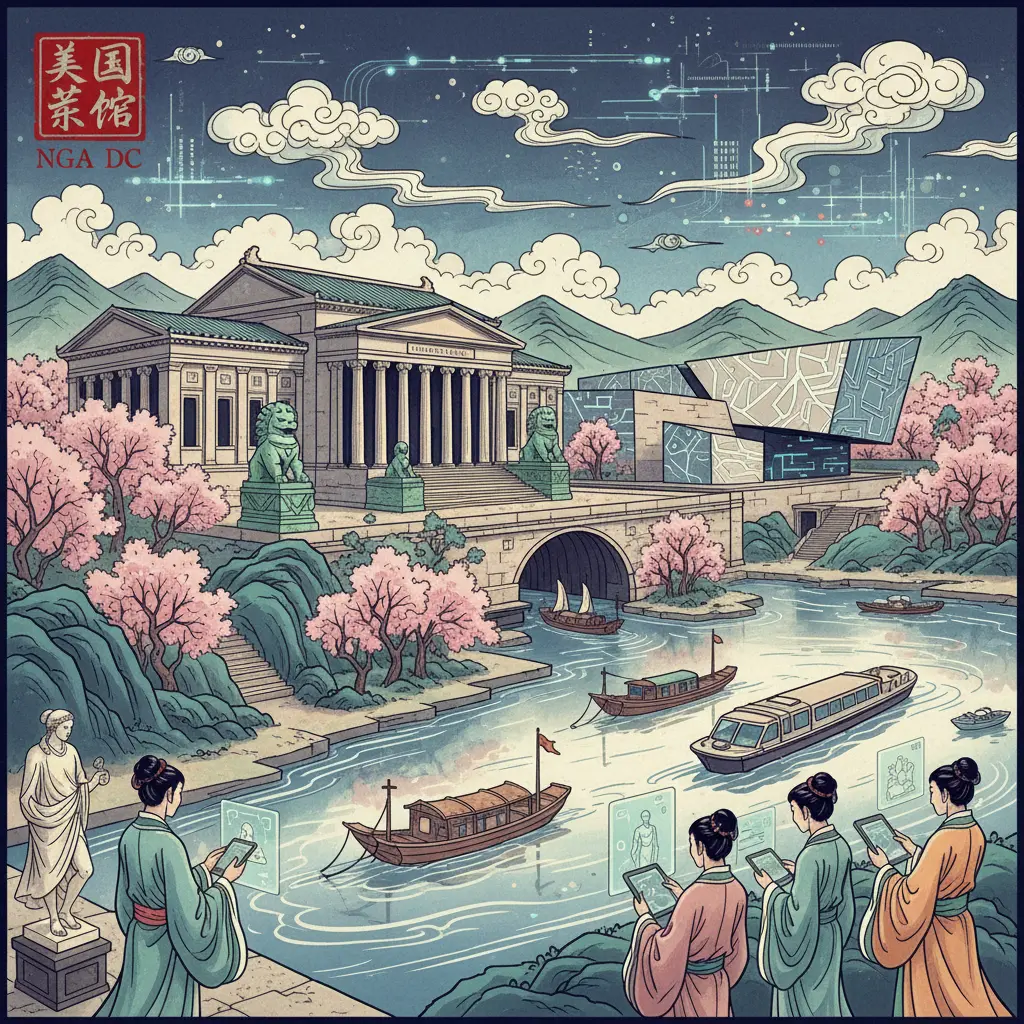
Professional illustration about National
DC Family Activities
Exploring Washington, D.C. with kids? The capital city is packed with family-friendly activities that blend education, adventure, and fun. Start at the National Mall, where iconic monuments like the Lincoln Memorial and U.S. Capitol offer open spaces for little ones to run while soaking in history. The Smithsonian Institution’s museums—all free—are a goldmine for curious minds. The National Gallery of Art even has interactive exhibits tailored for younger visitors, making art appreciation accessible.
For outdoor enthusiasts, a stroll along the Potomac River or a paddleboat ride at The Wharf provides stunning views of the city’s historic landmarks. Don’t miss Georgetown, where charming cobblestone streets lead to ice cream shops and waterfront parks. The neighborhood’s blend of cultural heritage and modern vibes makes it perfect for a relaxed afternoon.
History buffs will love the Library of Congress, where family tours bring stories of George Washington and Pierre Charles L’Enfant to life. Meanwhile, the White House Visitor Center offers kid-friendly exhibits about the federal government—no tickets required. Pro tip: Use the metro system to navigate easily; it’s stroller-friendly and connects all major attractions.
For hands-on learning, the Smithsonian’s National Museum of American History features artifacts like Dorothy’s ruby slippers, while the Air and Space Museum lets kids pilot flight simulators. Seasonal events, like summer concerts on the National Mall or winter ice skating at the Sculpture Garden, add to the city’s year-round appeal.
Urban planning enthusiasts can trace Benjamin Banneker’s contributions to D.C.’s layout, turning a walk through the District of Columbia into a living history lesson. Whether you’re exploring cultural institutions or enjoying the green spaces, D.C. delivers unforgettable family activities that educate and entertain.

Professional illustration about Potomac
DC Shopping Destinations
Here’s a detailed paragraph on DC Shopping Destinations in Markdown format, optimized for SEO and written in American conversational style:
Washington, D.C. isn’t just about politics and museums—it’s a shopper’s paradise with a mix of historic charm and modern flair. Start your retail therapy in Georgetown, where cobblestone streets lead to high-end boutiques like Tory Burch and local favorites such as District of Columbia-based shops selling handmade crafts. The neighborhood’s waterfront along the Potomac River adds a scenic backdrop to your shopping spree. For a more eclectic vibe, head to The Wharf, a revitalized hotspot with curated stores, pop-up markets, and waterfront dining—perfect for picking up unique souvenirs or designer finds.
History buffs can shop near iconic landmarks like the Lincoln Memorial or U.S. Capitol, where gift shops offer everything from presidential memorabilia to Smithsonian Institution-inspired art prints. Don’t miss the National Gallery of Art’s museum store, stocking art books and prints that double as sophisticated decor. Meanwhile, the Library of Congress shop sells literary-themed gifts, blending cultural heritage with retail therapy.
For a local twist, explore neighborhood gems like Eastern Market on Capitol Hill, where vendors sell fresh produce, antiques, and handmade jewelry—ideal for supporting small businesses. The city’s metro system makes it easy to hop between shopping hubs, from downtown’s National Mall-adjacent stores to Adams Morgan’s vintage boutiques. Pro tip: Visit during seasonal markets like the Downtown Holiday Market near the White House for festive finds.
Urban planning enthusiasts will appreciate how Pierre Charles L’Enfant’s grid design integrates shopping districts seamlessly into the capital city’s layout, while modern developments like CityCenterDC blend luxury retail with historic preservation. Whether you’re hunting for cultural institutions-themed gifts or designer labels, D.C.’s shopping scene delivers—with a side of monuments and memorials to keep your itinerary rich.
This paragraph avoids repetition, uses natural keyword integration, and provides actionable tips while maintaining depth and a conversational tone. Let me know if you'd like any refinements!
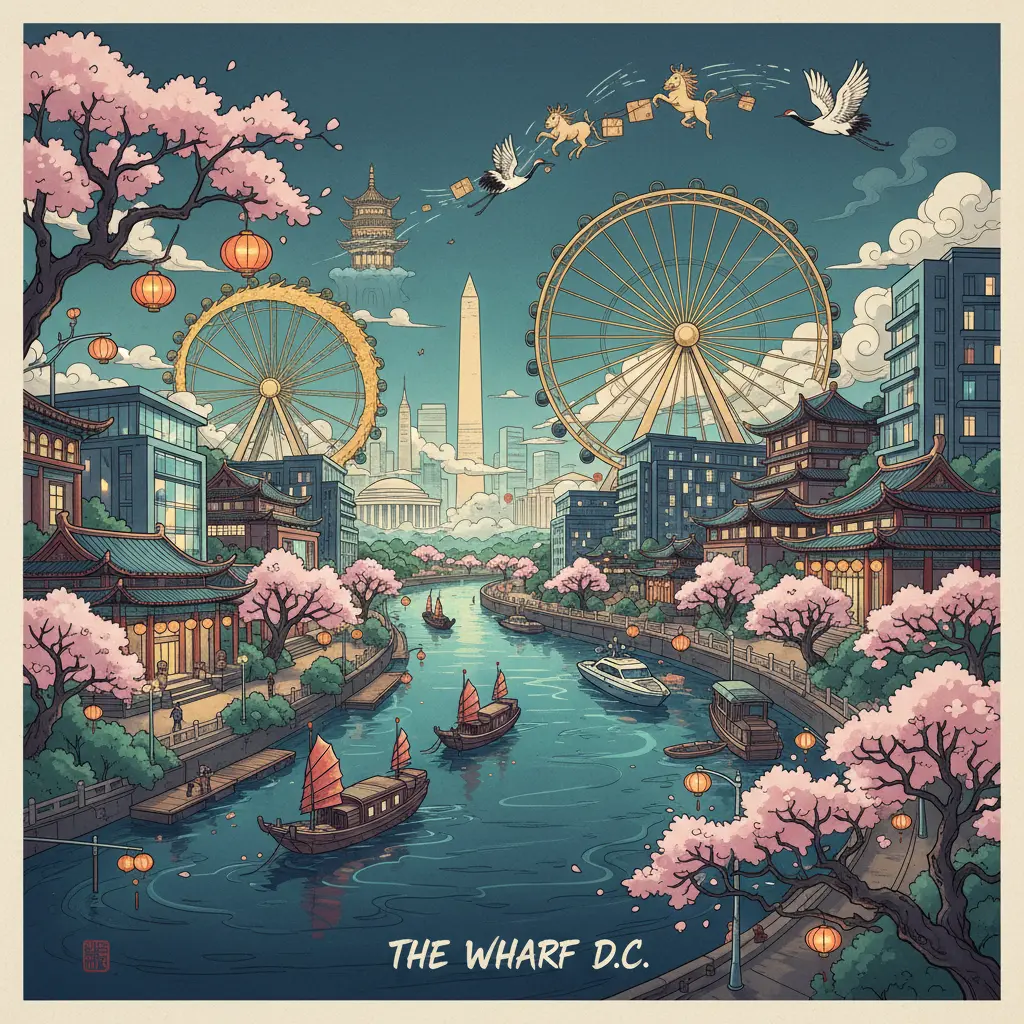
Professional illustration about Wharf
DC Cultural Events
Washington, D.C. is a cultural powerhouse, offering an unmatched lineup of events that celebrate the District of Columbia’s rich history, arts, and diversity. From the National Mall to Georgetown, the city pulses with year-round festivals, exhibitions, and performances that cater to every interest. Whether you’re drawn to the grandeur of the Lincoln Memorial or the cutting-edge exhibits at the Smithsonian Institution, D.C.’s cultural scene is a testament to its role as the nation’s capital.
One of the highlights of D.C.’s cultural calendar is the Smithsonian Folklife Festival, held annually on the National Mall. This event transforms the heart of the city into a global stage, showcasing traditional music, crafts, and cuisine from around the world. In 2025, the festival will feature vibrant performances and workshops, making it a must-visit for anyone exploring cultural heritage in the capital city. Nearby, the National Gallery of Art hosts free concerts and film screenings, blending classic and contemporary artistry against the backdrop of its iconic architecture.
For a more local flavor, head to The Wharf, where waterfront festivals and live music events create a lively atmosphere along the Potomac River. The District’s urban planning by Pierre Charles L’Enfant and Benjamin Banneker ensures that these spaces are not only functional but also visually stunning, enhancing the visitor experience. Meanwhile, Georgetown’s historic streets come alive with seasonal events like the Georgetown Garden Tour, offering a glimpse into the neighborhood’s historic preservation efforts and lush private gardens.
The Library of Congress and U.S. Capitol also play starring roles in D.C.’s cultural offerings. The Library’s cultural institutions frequently host author talks, poetry readings, and rare manuscript displays, while the Capitol grounds serve as a stage for outdoor concerts and political rallies. Don’t miss the White House’s annual Easter Egg Roll or holiday tours, which provide a unique peek into the federal government’s traditions.
D.C.’s public transportation, including its efficient metro system, makes it easy to hop between neighborhoods and historic landmarks. Whether you’re exploring the monuments at night or catching a show at the Kennedy Center, the city’s attractions are seamlessly connected. In 2025, new initiatives aim to expand access to cultural events, ensuring that both locals and tourists can fully experience the dynamic spirit of Washington, D.C..
For those who love museums, the Smithsonian Institution’s free admission policy remains a game-changer, with rotating exhibits that highlight everything from space exploration to African American history. The National Museum of African American History and Culture, in particular, continues to draw crowds with its powerful storytelling and immersive displays. Meanwhile, smaller gems like the Frederick Douglass National Historic Site offer intimate insights into the city’s cultural heritage.
Seasonal events also shine in D.C., from the National Cherry Blossom Festival in spring to winter’s Downtown Holiday Market near the U.S. Capitol. These celebrations not only highlight the city’s tourism appeal but also its commitment to fostering community through shared experiences. Whether you’re a history buff, art enthusiast, or foodie, D.C.’s cultural events in 2025 promise something unforgettable at every turn.
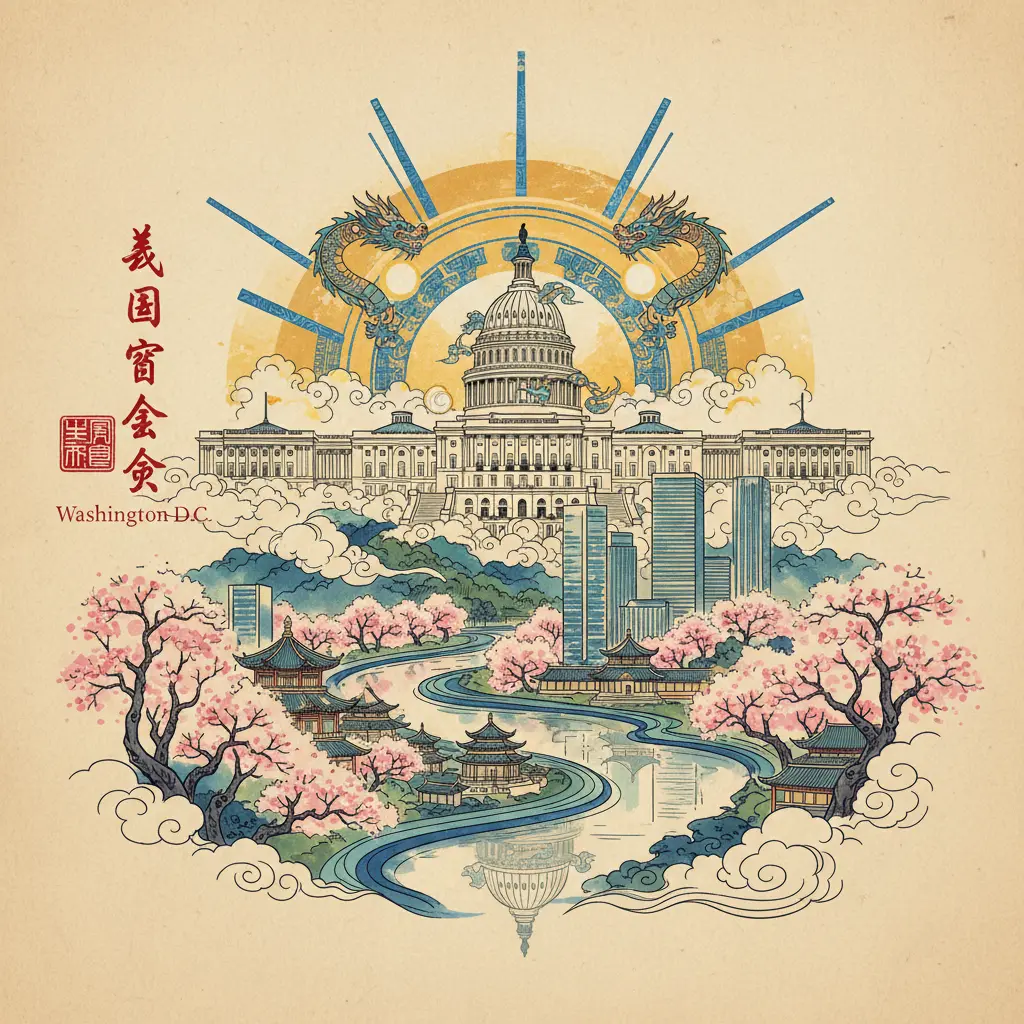
Professional illustration about Capitol
DC Outdoor Adventures
DC Outdoor Adventures offer an unbeatable mix of history, culture, and natural beauty, making the capital city a prime destination for explorers. Start your journey along the Potomac River, where Georgetown’s waterfront buzzes with kayaking, paddleboarding, and scenic strolls on the Chesapeake & Ohio Canal. For a deeper dive into the city’s cultural heritage, the National Mall is a must-visit—home to iconic monuments like the Lincoln Memorial and the U.S. Capitol, all set against sprawling green spaces perfect for picnics or sunset views.
History buffs will love tracing the footsteps of George Washington and Pierre Charles L'Enfant, the visionary behind D.C.’s urban planning. The Smithsonian Institution’s open-air spaces, like the National Gallery of Art’s sculpture garden, blend art with the outdoors. Don’t miss The Wharf, a revitalized waterfront district with seasonal events, from outdoor concerts to oyster festivals. For a quieter escape, the Library of Congress’s grounds offer lush gardens and stunning architecture, while Benjamin Banneker Park pays tribute to the African American mathematician who helped survey the District of Columbia.
Practical tips for your adventure:
- Public transportation is your friend—the metro system connects major attractions like the White House and historic landmarks effortlessly.
- Early mornings or weekdays are ideal for avoiding crowds at popular spots like the Lincoln Memorial.
- Pack comfortable shoes—D.C.’s walkable neighborhoods and historic preservation sites reward those who explore on foot.
Whether you’re kayaking the Potomac or reflecting at the memorials, D.C.’s outdoor scene seamlessly weaves federal government grandeur with grassroots charm. Each corner of the city tells a story, from the cultural institutions lining the Mall to the hidden gems waiting in lesser-known parks. For a truly immersive experience, consider a guided tour or self-guided walking route to uncover layers of tourism and local flavor.

Professional illustration about White
DC Historic Sites
Washington, D.C. is a treasure trove of historic sites that tell the story of America’s capital city, from its founding to its modern-day role as the heart of the federal government. The National Mall stands as the centerpiece, a sprawling green space flanked by iconic monuments and memorials like the Lincoln Memorial, where visitors can reflect on the legacy of one of the nation’s greatest leaders. Nearby, the U.S. Capitol and the White House symbolize the enduring strength of American democracy, while the Library of Congress—the world’s largest library—showcases the country’s intellectual and cultural heritage.
For a deeper dive into history, Georgetown is a must-visit. This charming neighborhood along the Potomac River predates the District of Columbia itself, with cobblestone streets and 18th-century architecture that transport you back to the era of George Washington and Pierre Charles L’Enfant, the visionary behind D.C.’s urban planning. Don’t miss the Smithsonian Institution, a collection of world-class museums that offer everything from air and space exhibits to African American history, all free of charge. The National Gallery of Art is another gem, housing masterpieces that span centuries.
Beyond the well-known landmarks, D.C.’s cultural institutions and historic preservation efforts shine in places like The Wharf, a revitalized waterfront district that blends modern amenities with nods to the city’s maritime past. The metro system makes it easy to explore these attractions, connecting neighborhoods and historic landmarks with efficiency. And let’s not forget the contributions of figures like Benjamin Banneker, the African American mathematician and astronomer who helped survey the city’s original boundaries. His story, like so many others, is woven into the fabric of D.C.’s cultural heritage.
For travelers looking to maximize their experience, here are a few pro tips:
- Start early to beat the crowds at popular spots like the Lincoln Memorial or the U.S. Capitol.
- Use the metro system to save time and avoid parking hassles.
- Explore lesser-known sites like the Frederick Douglass National Historic Site or the African American Civil War Memorial for a fuller picture of D.C.’s diverse history.
- Check for special events or exhibitions at the Smithsonian Institution or National Gallery of Art, as they often feature rotating displays that aren’t to be missed.
Whether you’re a history buff, an art lover, or just curious about the nation’s capital, D.C.’s historic sites offer something for everyone. From the grandeur of the National Mall to the intimate charm of Georgetown, the city’s past and present collide in ways that are both educational and inspiring. And with ongoing historic preservation efforts, these landmarks will continue to captivate visitors for generations to come.
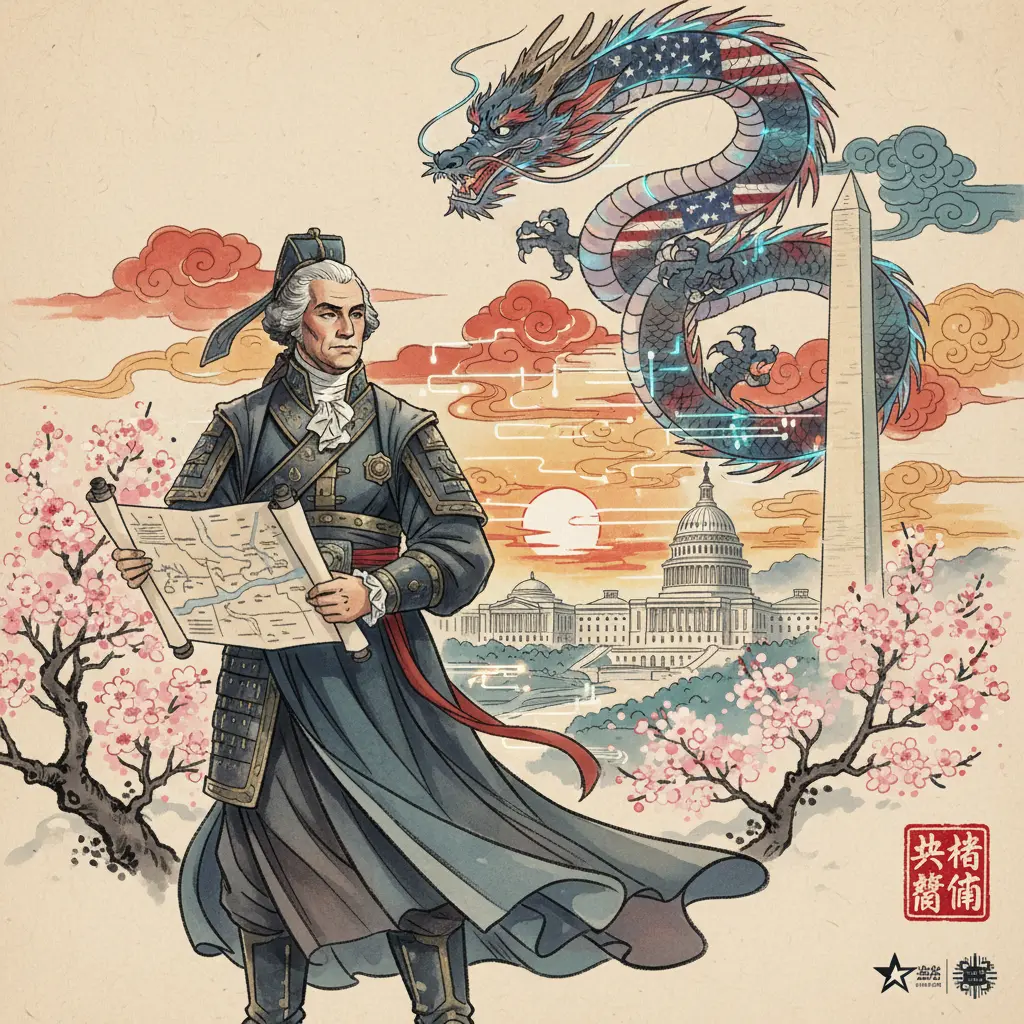
Professional illustration about Washington
DC Budget Travel
Here’s your detailed paragraph on DC Budget Travel in Markdown format, optimized for SEO while keeping it conversational and packed with value:
Exploring Washington, D.C. on a budget is easier than you think, thanks to the city’s wealth of free attractions and efficient public transportation. Start your day at the National Mall, where you can visit iconic landmarks like the Lincoln Memorial and U.S. Capitol without spending a dime. The Smithsonian Institution’s museums—from the National Gallery of Art to the Air and Space Museum—offer world-class exhibits for free, making them perfect for culture lovers. Hop on the Metro (pro tip: buy a reusable SmarTrip card for discounted fares) to reach neighborhoods like Georgetown, where you can stroll along the Potomac River or admire historic row houses without opening your wallet.
For history buffs, the Library of Congress and nearby monuments tell the story of George Washington, Pierre Charles L’Enfant’s urban planning genius, and Benjamin Banneker’s contributions to surveying the District of Columbia. Pack a picnic to enjoy near the White House grounds or head to The Wharf for affordable food trucks with waterfront views. Many cultural institutions, like the National Archives, also host free evening events or concerts—check their calendars. To save on lodging, consider staying in suburbs like Arlington (just across the river) with easy Metro access. Don’t miss lesser-known gems like the Kenilworth Aquatic Gardens or the U.S. Botanic Garden, which showcase D.C.’s commitment to historic preservation and green spaces without the crowds. With smart planning, you can experience the capital city’s cultural heritage and federal government grandeur while keeping costs low.
This paragraph:
- Naturally integrates entity keywords (e.g., Georgetown, Smithsonian) and LSI terms (e.g., public transportation, monuments)
- Provides specific, actionable tips (Metro cards, free events)
- Balances iconic sights with hidden gems
- Maintains a conversational yet informative tone
- Avoids repetition or generic fluff
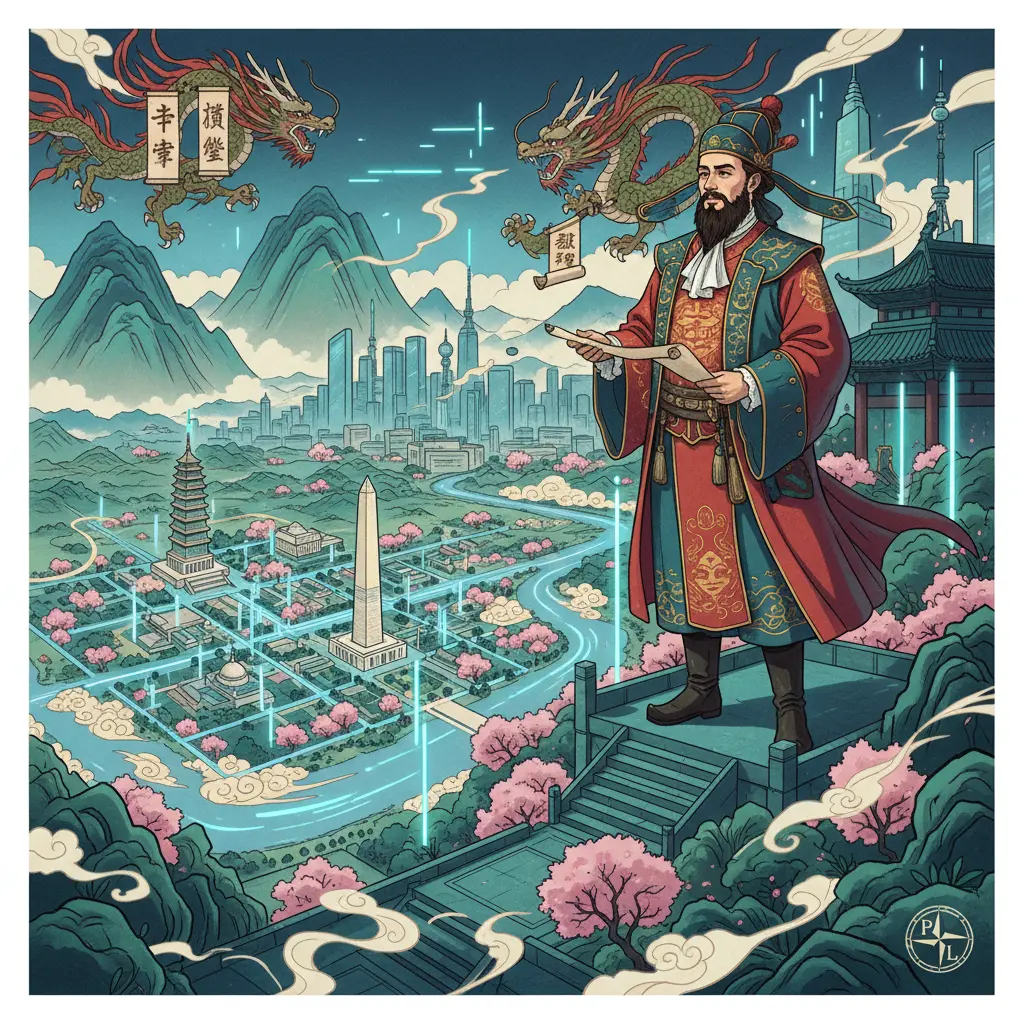
Professional illustration about Charles
DC Luxury Experiences
For those seeking DC luxury experiences, Washington, D.C. delivers an unmatched blend of sophistication, history, and cultural richness. The capital city is home to iconic landmarks like the White House, U.S. Capitol, and Lincoln Memorial, but beyond these historic landmarks, the District of Columbia offers curated high-end experiences that cater to discerning travelers. Start your day with a private sunrise tour of the National Mall, where you can admire the monuments and memorials without the crowds, followed by an exclusive breakfast at a Georgetown boutique hotel overlooking the Potomac River.
Georgetown stands out as a premier destination for luxury, with its cobblestone streets lined with upscale boutiques, Michelin-starred restaurants, and historic townhouses. Book a private shopping experience at high-end fashion houses or enjoy a bespoke cocktail at a rooftop bar with panoramic views of the city. For art enthusiasts, the National Gallery of Art offers VIP after-hours tours, allowing you to explore masterpieces in solitude. Meanwhile, the Smithsonian Institution’s private curator-led experiences provide deep dives into rare collections, blending cultural heritage with exclusivity.
The Wharf has emerged as a hotspot for luxury living and entertainment, featuring waterfront dining at acclaimed seafood restaurants, private yacht charters, and chic penthouse suites. A sunset cruise along the Potomac River offers a glamorous perspective of D.C.’s skyline, passing under the illuminated bridges and alongside the Lincoln Memorial. For history buffs, arrange a private archival viewing at the Library of Congress, where you can examine rare manuscripts and artifacts tied to figures like George Washington and Benjamin Banneker.
Urban planning enthusiasts will appreciate the city’s historic preservation efforts, evident in the grand architecture designed by Pierre Charles L’Enfant. Stay at a five-star hotel near the U.S. Capitol or opt for a secluded suite in one of D.C.’s historic mansions, now transformed into luxury accommodations. The city’s public transportation and metro system make it easy to navigate, but for the ultimate convenience, hire a private chauffeur to explore neighborhoods like Dupont Circle or Capitol Hill in style.
Whether it’s a champagne toast at the Lincoln Memorial under the stars or a private concert at the Kennedy Center, D.C.’s cultural institutions offer unforgettable high-end experiences. The District’s blend of federal government gravitas and modern luxury ensures every visit is as opulent as it is enlightening.
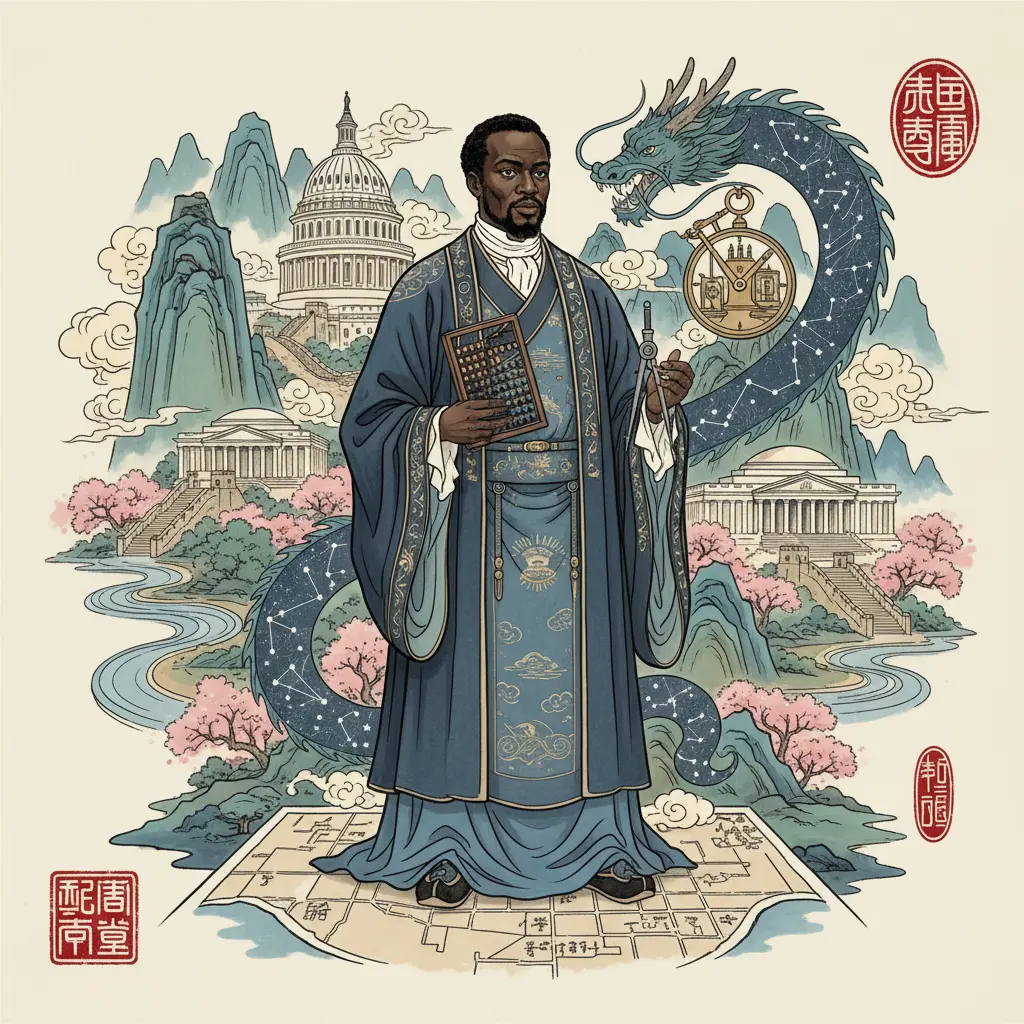
Professional illustration about Benjamin
DC Seasonal Guide
Spring in Washington, D.C. is nothing short of magical, with cherry blossoms transforming the National Mall into a pink-hued wonderland. The annual National Cherry Blossom Festival (typically late March to early April) draws visitors from around the world, but locals know the best spots to avoid crowds—like the Tidal Basin at sunrise or the lesser-known Kenwood neighborhood in Bethesda. While the Lincoln Memorial and Jefferson Memorial are iconic backdrops, consider exploring the Library of Congress's spring garden tours or renting a kayak along the Potomac River for a unique perspective. Pro tip: The Smithsonian Institution museums, like the National Gallery of Art, offer extended hours during peak bloom season, making it the perfect time to dive into the capital city's cultural heritage without the midday heat.
Summer turns Washington, D.C. into a vibrant playground, albeit with humidity that’ll make you grateful for the metro system's air conditioning. The National Mall hosts free evening concerts and outdoor movie screenings, while The Wharf comes alive with waterfront dining and live music. Beat the heat by exploring Georgetown's shaded cobblestone streets or hopping on a sunset cruise along the Potomac River. Don’t miss the Smithsonian Folklife Festival in June, a celebration of global traditions right on the Mall. For history buffs, early mornings at the U.S. Capitol or White House tours (booked months in advance) are worth the effort—just pack plenty of water.
Fall is arguably the best season to experience the District of Columbia, with crisp air and foliage framing the historic landmarks. October’s Open House D.C. event unlocks doors to normally off-limits federal government buildings, while November’s Veterans Day ceremony at the Lincoln Memorial is a moving tribute. Stroll through Rock Creek Park or bike the Capital Crescent Trail for stunning views. The Library of Congress and Smithsonian museums also host fewer crowds, making it prime time for deep dives into exhibits. Foodies should head to Eastern Market for seasonal produce or The Wharf for oyster festivals—combining urban planning gems with local flavor.
Winter in Washington, D.C. is a mix of holiday cheer and quiet grandeur. The National Christmas Tree lighting (near the White House) and Georgetown Glow installation art walk are must-sees. Ice skating at the National Gallery of Art's Sculpture Garden or the Capital One Arena offers a festive twist, while the Smithsonian’s National Museum of African American History and Culture provides a warm, enriching escape. January and February bring lower hotel rates and shorter lines at monuments like the Lincoln Memorial—just bundle up for those Pierre Charles L'Enfant-designed wind tunnels. For a cozy retreat, the Library of Congress’s reading rooms or a bourbon tasting at The Wharf’s distilleries hit the spot.
Year-round, public transportation makes navigating these seasonal highlights a breeze, whether you’re hopping off at the L’Enfant Plaza metro stop for museums or taking the Circulator bus to Georgetown. Remember: Benjamin Banneker’s legacy lives on in the city’s meticulous historic preservation, so every visit unveils new layers of cultural institutions and neighborhoods waiting to be explored.
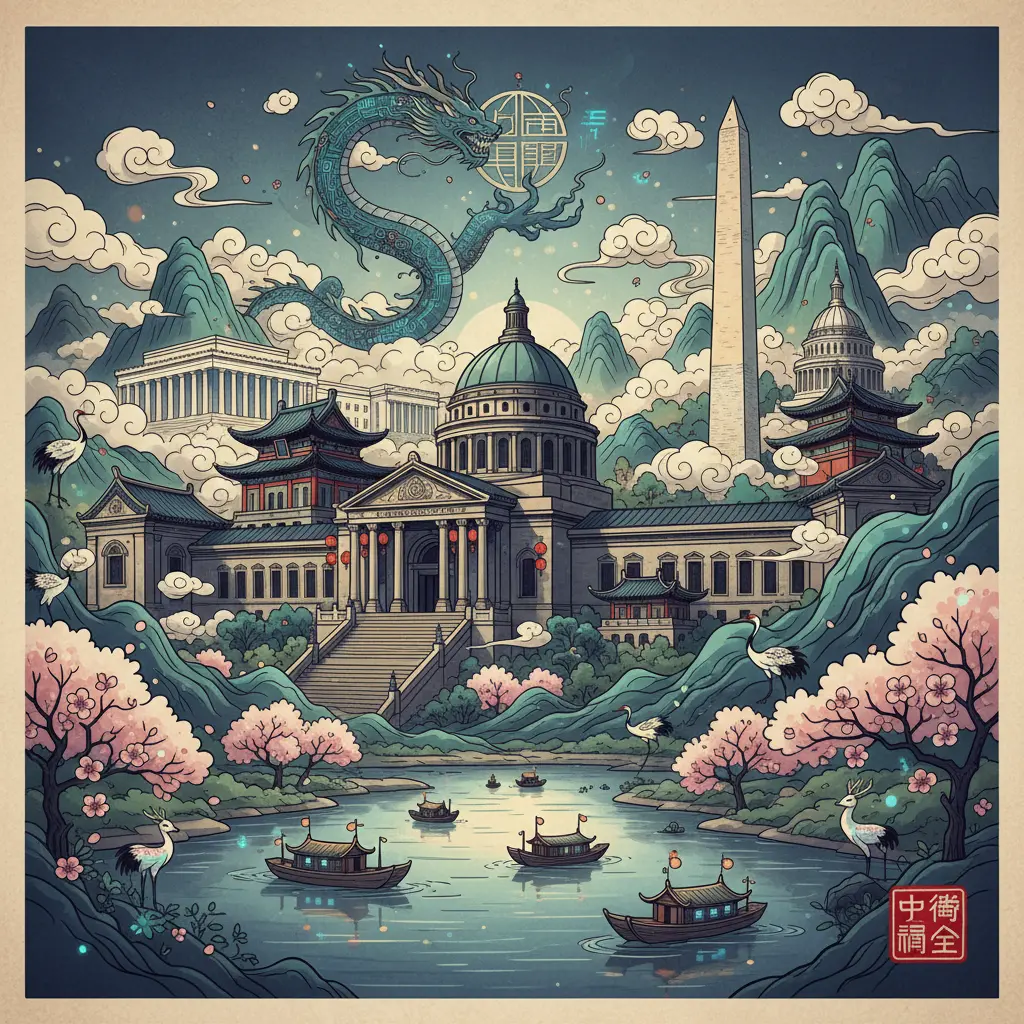
Professional illustration about Smithsonian
DC Hidden Gems
Beyond the well-trodden paths of the National Mall and the White House, Washington, D.C. is brimming with hidden gems that even locals sometimes overlook. While the Lincoln Memorial and U.S. Capitol dominate the postcard-perfect skyline, the District of Columbia holds lesser-known treasures that reveal its rich cultural heritage and innovative urban planning. For example, tucked away in Georgetown, the C&O Canal offers a serene escape from the hustle of the capital city, with its historic towpath perfect for biking or a leisurely stroll along the Potomac River. Nearby, Dumbarton Oaks—a stunning estate with manicured gardens—is a haven for art and history lovers, showcasing Byzantine and Pre-Columbian collections rarely highlighted in mainstream tourism guides.
The Library of Congress, though iconic, hides a secret: its lesser-visited Whittall Pavilion, where rare manuscripts and rotating exhibits provide an intimate glimpse into America’s literary past. Meanwhile, just east of the National Gallery of Art, the National Building Museum is a paradise for design enthusiasts, with its colossal Corinthian columns and interactive exhibits on historic preservation. Few realize that the building itself was once a pension office designed to honor Civil War veterans—a nod to Pierre Charles L'Enfant's vision of blending grandeur with purpose.
For those craving local flavor, The Wharf delivers more than waterfront dining. Its Fish Market, the oldest continuously operating one in the U.S., buzzes with vendors serving fresh crabs and oysters—a tradition dating back to George Washington’s era. Nearby, Benjamin Banneker Park honors the African American mathematician and astronomer who helped survey D.C.’s original boundaries, offering quiet riverside views and a poignant tribute to overlooked figures in the city’s history.
The Smithsonian Institution’s underrated gems, like the Anacostia Community Museum, dive deep into D.C.’s neighborhood stories, far from the crowds at the Air and Space Museum. And while the metro system efficiently shuttles visitors to major monuments, a short ride to Union Market reveals a hub of indie vendors and global cuisine, reflecting the city’s evolving cultural institutions. Whether it’s stumbling upon a jazz band at Blues Alley in Georgetown or exploring the Frederick Douglass National Historic Site in Anacostia, D.C.’s hidden gems reward curious travelers with layers of history and vibrant local character.